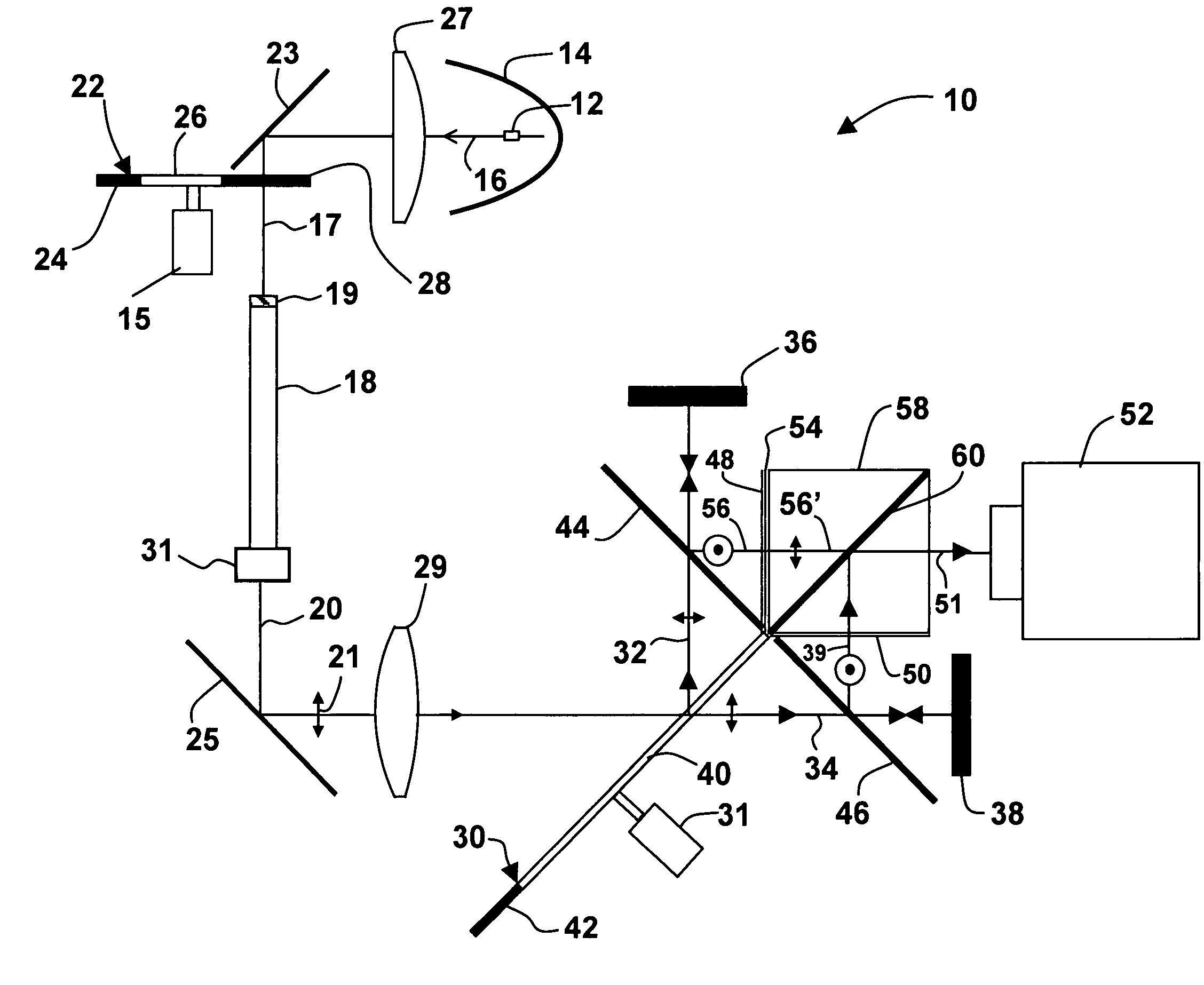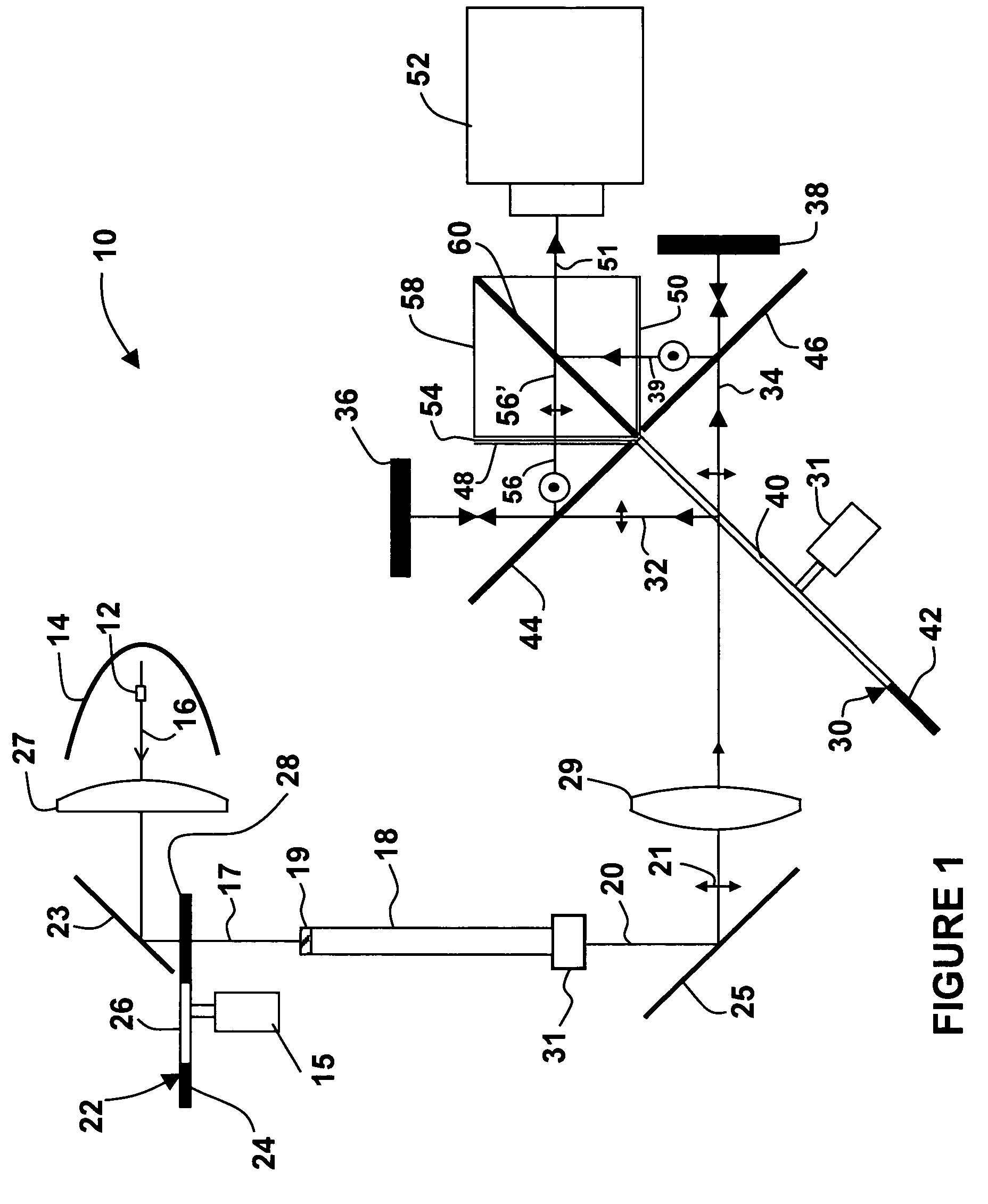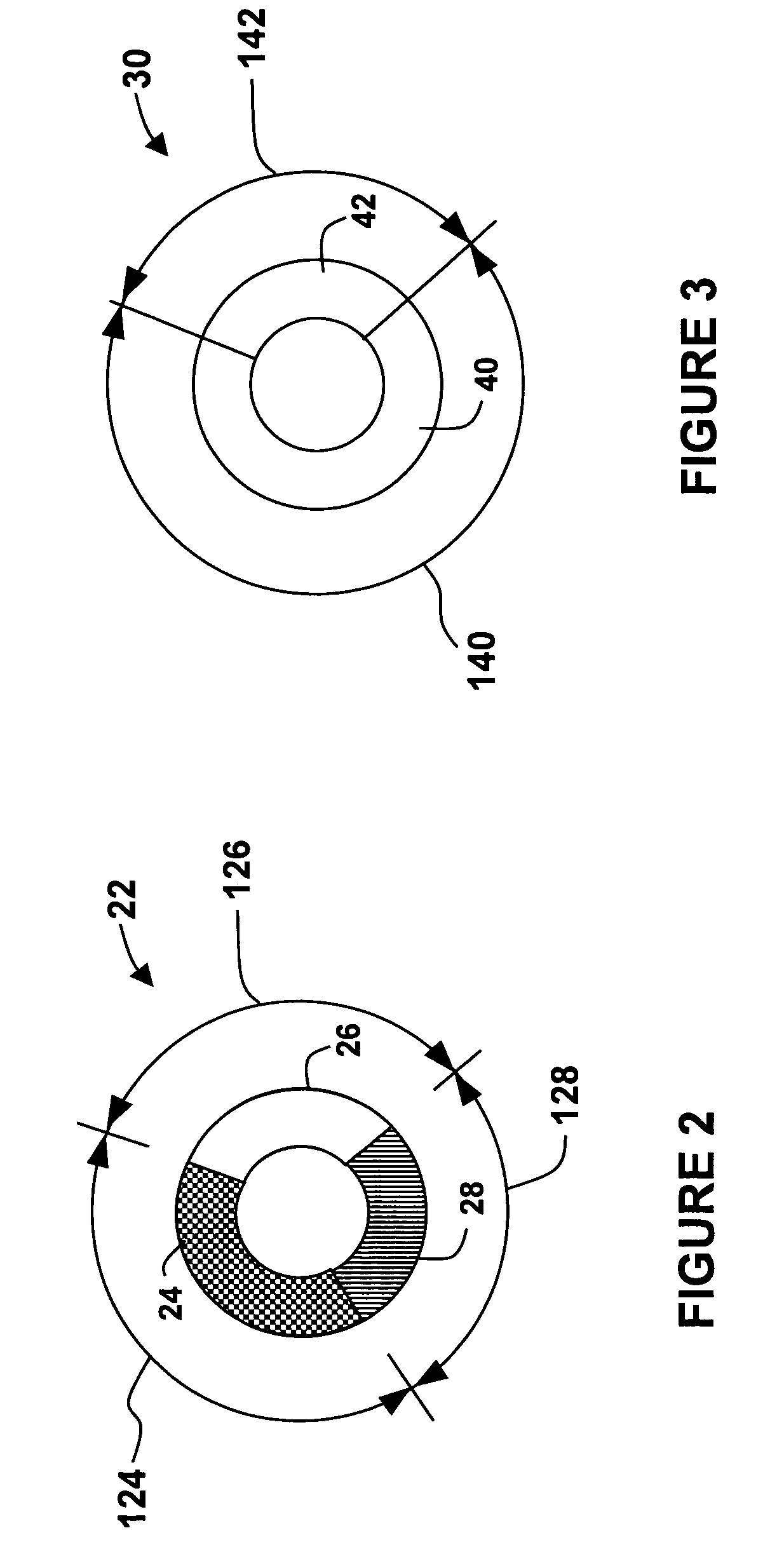Two-panel liquid-crystal-on-silicon color management system
a liquid crystal on silicon, color management technology, applied in the direction of picture reproducers, static indicating devices, instruments, etc., can solve the problems of system not being as bright as a three-panel system, image not being as bright as a full three-panel system
- Summary
- Abstract
- Description
- Claims
- Application Information
AI Technical Summary
Benefits of technology
Problems solved by technology
Method used
Image
Examples
Embodiment Construction
[0038]Brightness in the systems described above is also limited by the requirement that the overall system be “white-point balanced.” White-point balanced refers to the need to limit the maximum brightness of two of the displayed color channels in proper relation to the third, which is referred to as the “brightness-limiting color channel,” in order that the white state, i.e. when all color channels are turned up to maximum balanced brightness, of the system match some specified color temperature corresponding to the color of a blackbody radiator of a given temperature, typically between 6,000° K and 12,000° K. In the BCDCS-type two-panel system described above, color assignments to the fixed-color and two-color panels can be made arbitrarily. However, to achieve a maximally bright color-balanced system, the color channel that would limit the overall white-balanced brightness of a three-panel system should be assigned to the non-color-sequencing imager, i.e. the fixed color panel. D...
PUM
| Property | Measurement | Unit |
|---|---|---|
| angle | aaaaa | aaaaa |
| angles | aaaaa | aaaaa |
| blue/green transition wavelengths | aaaaa | aaaaa |
Abstract
Description
Claims
Application Information
 Login to View More
Login to View More - R&D
- Intellectual Property
- Life Sciences
- Materials
- Tech Scout
- Unparalleled Data Quality
- Higher Quality Content
- 60% Fewer Hallucinations
Browse by: Latest US Patents, China's latest patents, Technical Efficacy Thesaurus, Application Domain, Technology Topic, Popular Technical Reports.
© 2025 PatSnap. All rights reserved.Legal|Privacy policy|Modern Slavery Act Transparency Statement|Sitemap|About US| Contact US: help@patsnap.com



